Are you wondering, “How much does it actually cost to travel to Machu Picchu solo?”
As a solo female traveler who explored Peru with just a backpack, I’m here to share the real travel costs with you!
Introduction
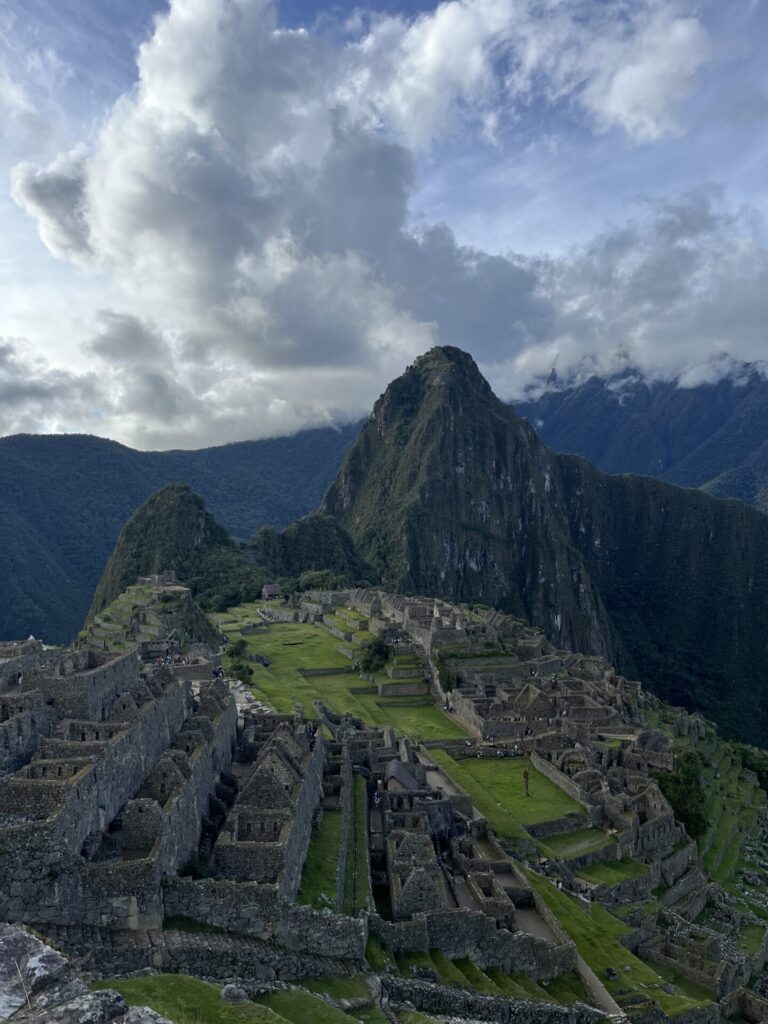
Hi there, I’m AroundMeTrip!
In this article, I’ve broken down the actual expenses from my solo trip to Machu Picchu in 2025, where I stayed 3 nights in Cusco and 3 nights in Aguas Calientes.
I’ll share all the details—including transportation, accommodation, food, and more—based on what I personally spent.
I hope this helps you plan your own unforgettable journey to Machu Picchu!
Travel Style and Overview
- Solo trip, backpack only (no checked luggage)
- Accommodation: mix of hotels, hostels, and Airbnb
- Language: basic English and Spanish for travel
- Cash: Withdrawn from local ATMs (using WISE USD account)
Itinerary: 7-Day Machu Picchu Trip
- Day 1Arrival in Cusco
night bus from Lima
- Day 2-3Cusco sightseeing
high-altitude acclimatization, Rainbow Mountain tour
- Day 4Travel to Aguas Calientes by Peru Rail
- Day 5Visit Machu Picchu ruins
- Day 6Explore Aguas Calientes
- Day 7Return to Cusco via Stand by Me trekking route
Route Options from Cusco to Machu Picchu
There are two major routes to reach Machu Picchu from Cusco:
- 🚆 Bus + Train (PeruRail or Inca Rail)
- 🚶 Bus + Trekking (Inca Trail or the “Stand By Me” route)

For my trip, I chose:
- Outbound: Bus + PeruRail
- Return: Bus + “Stand By Me” route 🚶
My Route
Outbound: Bus + Peru Rail (scenic, comfortable)
One important thing to note: PeruRail does not depart from Wanchaq Station in Cusco.
You need to check in at Wanchaq Station first, then take a bus to Ollantaytambo.
The train ride begins from Ollantaytambo to Aguas Calientes.


Make sure to head to Wanchaq Station on time for your check-in and bus departure.
Return: Walking the “Stand By Me” Route
For the return trip, I chose an adventurous path known as the “Stand By Me” route.
This route follows the train tracks from the Hydroelectric Station (Hidroelectrica) for about 10 kilometers, taking approximately 4 hours on foot.
The path itself is mostly flat and easy to follow along the railway line, making it a scenic and enjoyable walk.
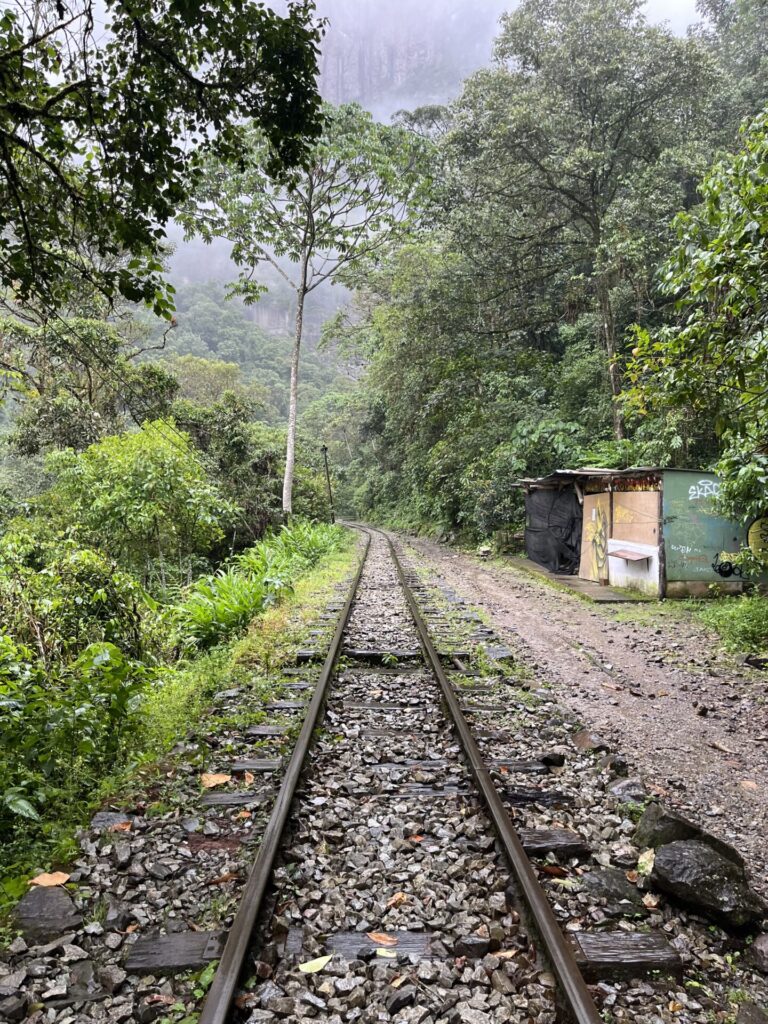
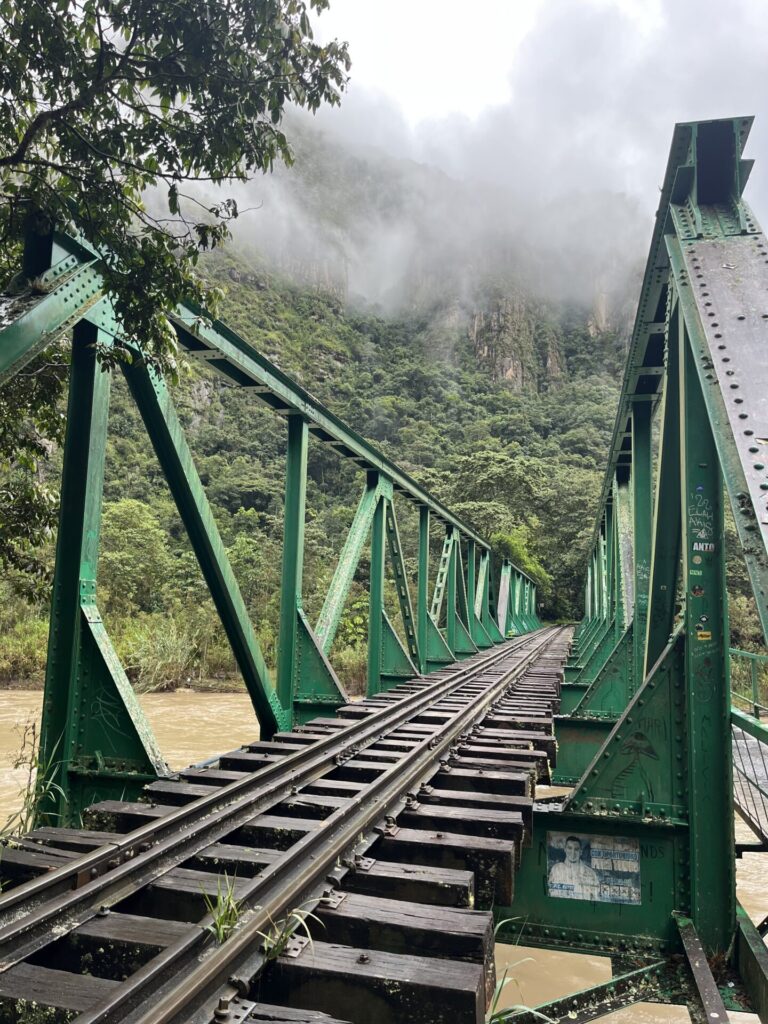
Once you arrive at the Hydroelectric Station, you’ll need to walk a bit further to reach the bus stop.
There are usually people at the station offering shuttle services to the bus stop for a small fee if you prefer not to walk.
After enough passengers gather at the bus stop, the bus will depart back to Cusco.
Total Travel Cost
The total cost of my 7-day trip to Machu Picchu was
1,706 soles (454.8 USD)!
When averaged out, it comes to about 65 USD per day.

Since the cost of living in Peru is relatively low, don’t you think this is more affordable than expected? 😊
Detailed Cost Breakdown
Transportation
Total cost:108 USD
・Cusco → Machu Picchu Village (PeruRail): 265.2 soles (70.7 USD)
・Machu Picchu Village → Cusco (Trekking + Bus): 50 soles (13.3 USD)
・Machu Picchu ⇄ Machu Picchu Ruins (Bus): 90 soles (24 USD)
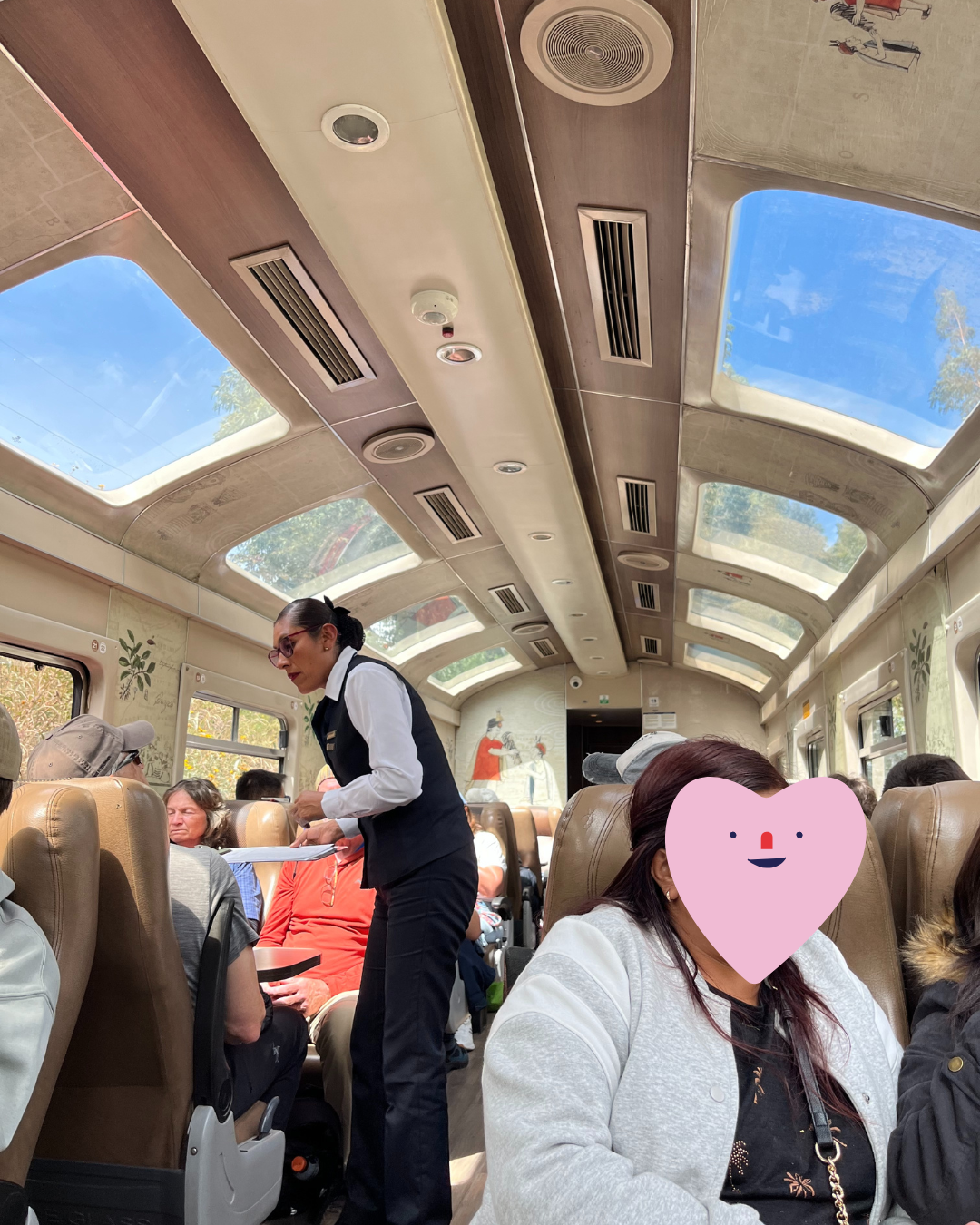
Taking the train to Machu Picchu on PeruRail or Inca Rail is one of the highlights of the trip!
You can book your tickets in advance through the official websites or travel agencies.
If you’re traveling outbound, I highly recommend choosing a seat on the left side of the train—you’ll get the best scenic views!
(The right side mostly faces rocky walls.)

I didn’t book in advance and just bought a same-day ticket.
Since the seats are arranged in groups of four, I was randomly seated with a family of three—it was a bit awkward, to be honest! 😅
So if you’re traveling with friends or family and want to sit together, be sure to book your seats in advance!
Accommodation
Total cost:108 USD
・Cusco (3 nights): 36 USD
Hotel I stayed at Hotel: InkaYra
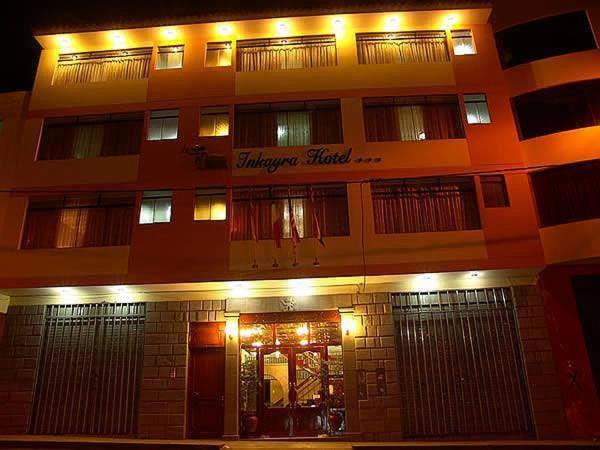
In Cusco, the closer you stay to the historic center, the more expensive everything becomes.
Since I stayed a bit outside the city center, the price was very reasonable.

The area was surrounded by wholesale shops where local restaurant owners seemed to be stocking up supplies. 💡
The hotel included breakfast—and there was also a super cute cat! 🐈 Personally, I was very satisfied with my stay.
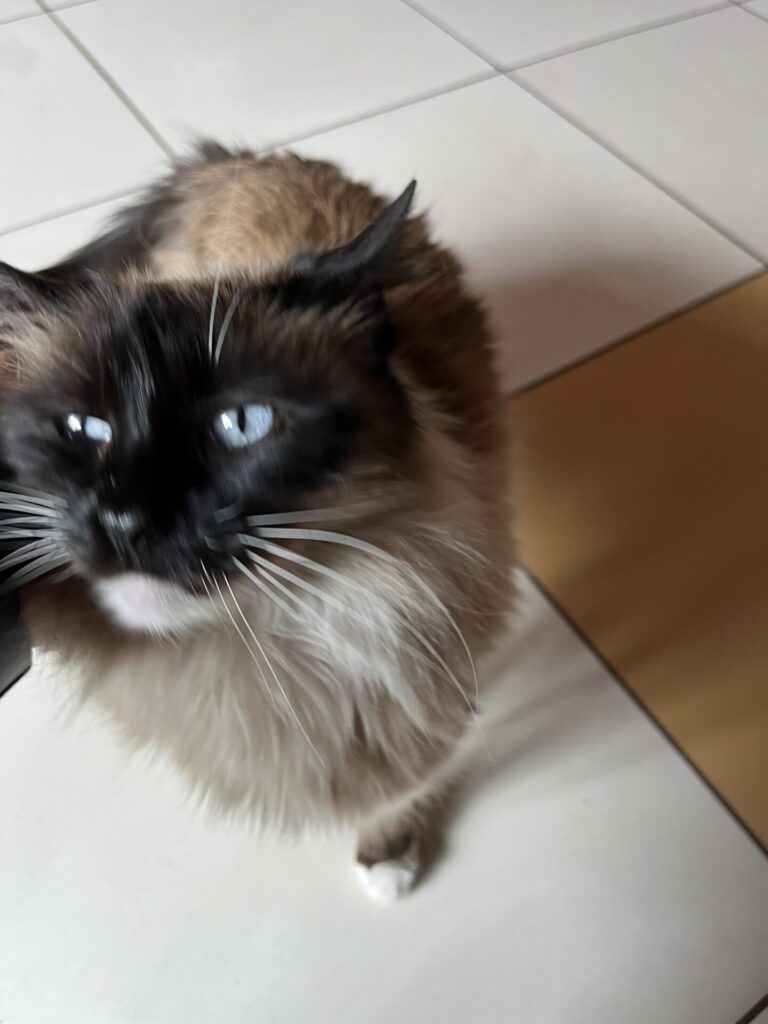
・Aguas Calientes (3 nights): 72 USD
Hotel I stayed at: Pakarina Hotel
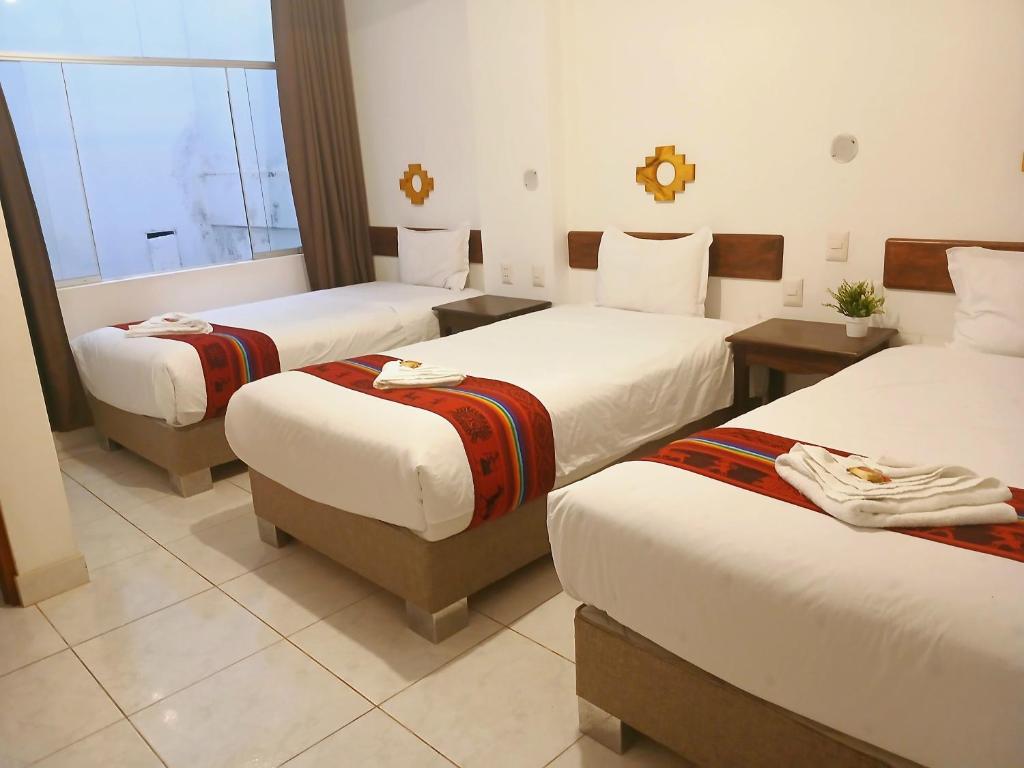
This was a clean single room with breakfast included.
They also had coca tea available at all times to help with altitude sickness. 💡
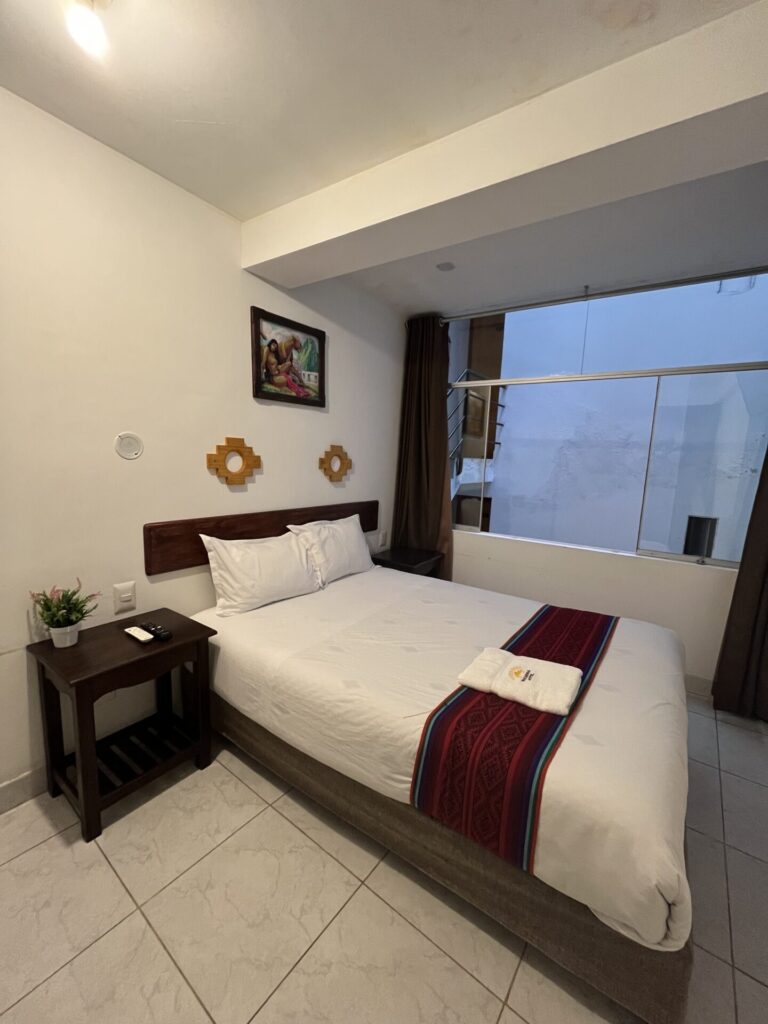
Important Tips for Choosing a Hotel in Machu Picchu Village
Machu Picchu Village is extremely hilly!
If you have a lot of luggage, I highly recommend booking a hotel near the train station at the bottom of the hill.
When you look at the map:
- The Urubamba River side is at the bottom of the hill (closer to the train station).
- The Machu Picchu Hot Springs side is higher up.

I stayed at a hotel uphill, and even with just a 7 kg backpack, I was out of breath! 😅
Thankfully, I was traveling light!
Food|Enjoy delicious local meals
Total cost:73 USD
・Local eateries in Cusco: 7 Soles (~1.9 USD)
In Peru, rice is a staple food, and most meals come as a hearty one-plate dish with beans, rice, meat, and vegetables.
It’s not only filling but also quite affordable!
It’s also common to be served a soup as a starter with your meal.
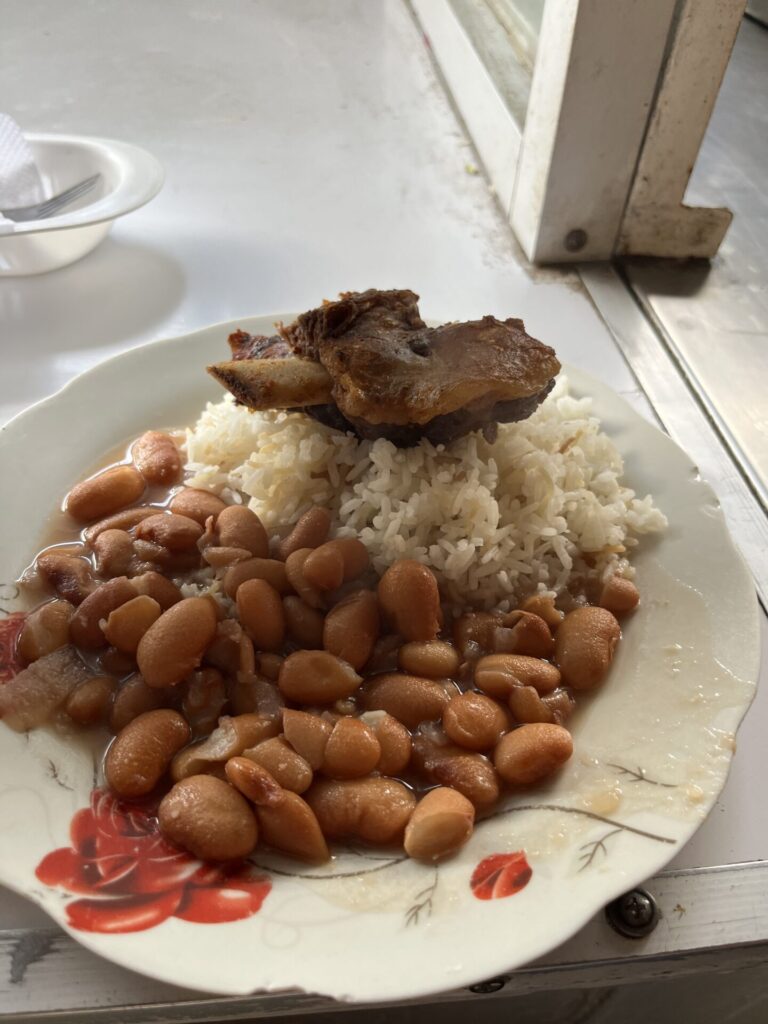
・Restaurants in Cusco’s historic center: from 50 Soles (~13 USD)
Restaurants just two blocks from the center of the historic district tend to charge significantly higher prices—this is straight from local shop owners!
In the evenings, food stalls pop up, so I balanced my meals by mixing affordable street food with restaurant dining.
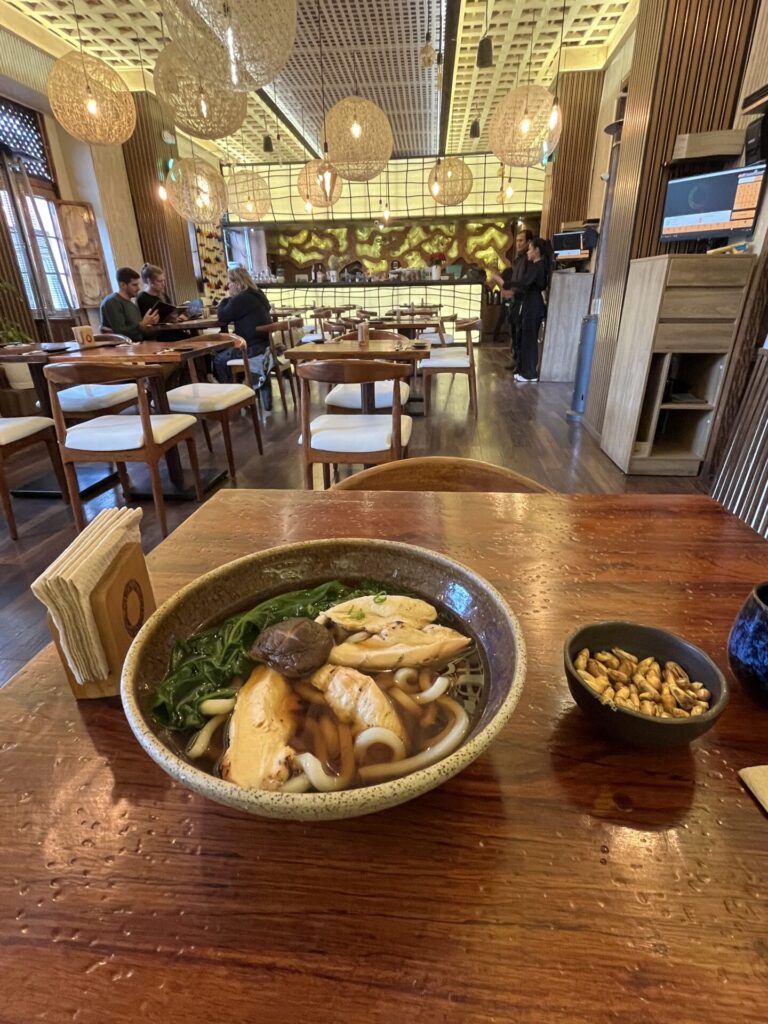
・Street food: from 3.5 Soles (~1 USD)
Peru is full of street food stalls!
They change throughout the day—some are open in the morning, some in the evening, and others late at night.
If you visit Peru, I definitely recommend trying these local street eats! 😊
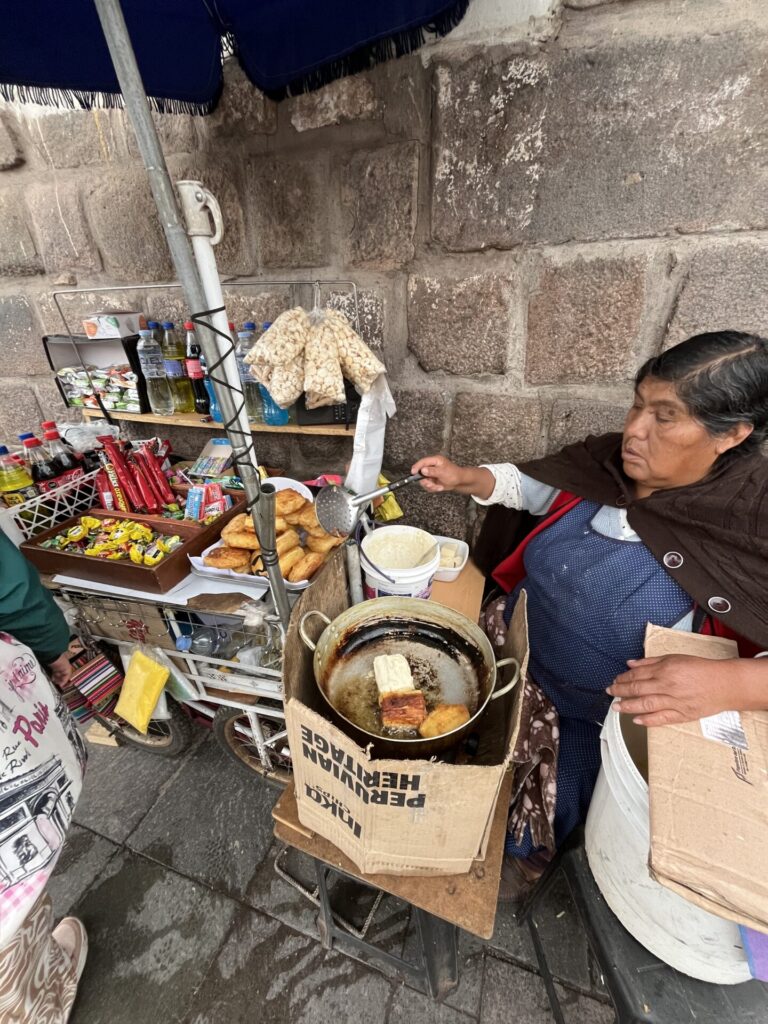
・Restaurants in Aguas Calientes: from 30 Soles (~8 USD)
Since Machu Picchu Village thrives on tourism, the prices are a bit higher than in other towns.
But still, it’s quite a good deal—you can usually get an appetizer, main dish, drink, and dessert all included at this price, and you’ll leave feeling completely full.
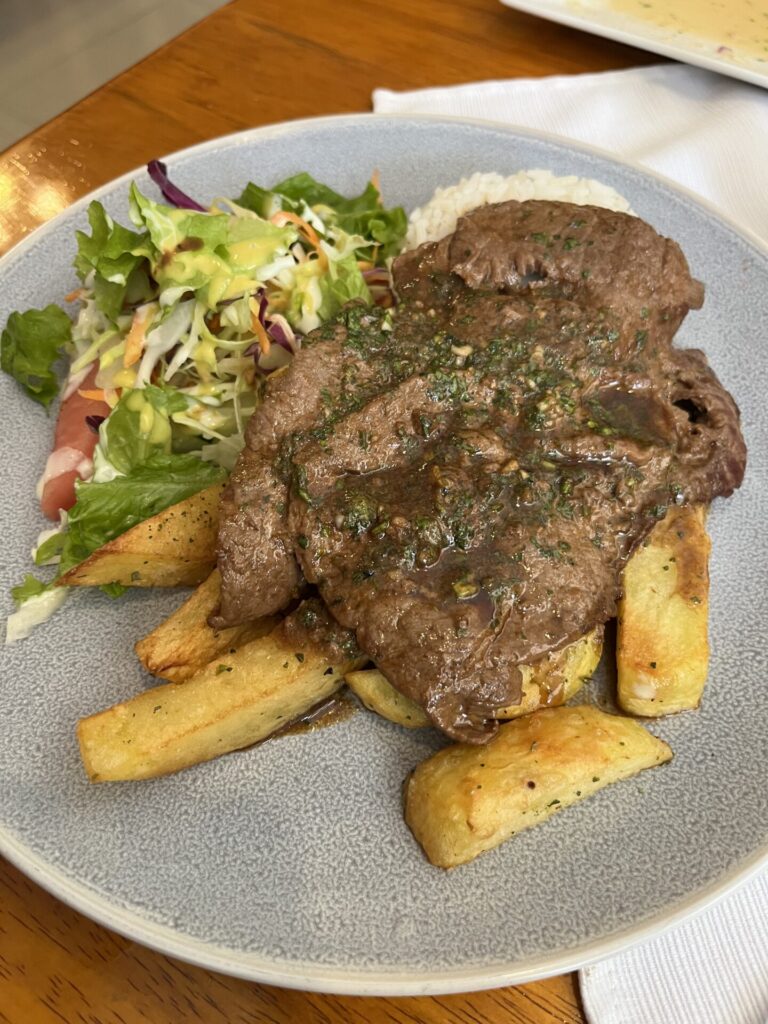
Activities
Total cost:65 USD
・Machu Picchu entrance fee (Circuit 2-A): 152 Soles (40.5 USD)
I purchased a Circuit 2-A ticket with entry time at 3:00 PM.
Machu Picchu has a daily visitor limit, so it’s highly recommended to book your ticket in advance.
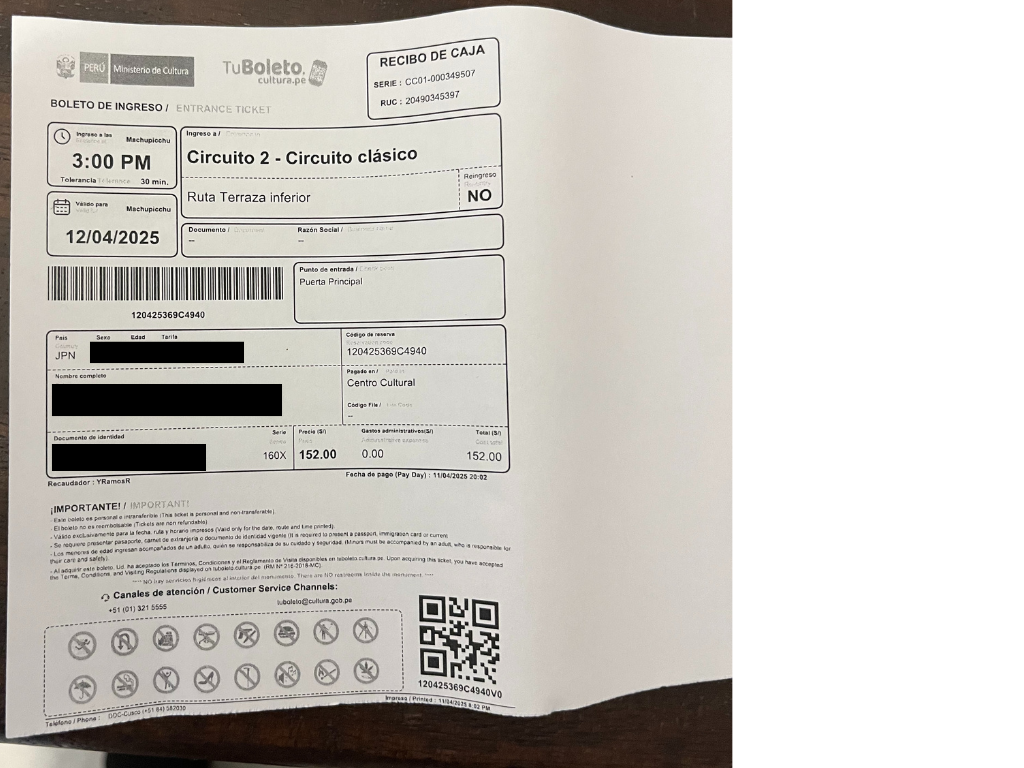
There are six circuits (routes), each offering access to different areas:
- Ruta 1-A, Ruta 1-B, Ruta 2-A, Ruta 2-B, Ruta 3-A, Ruta 3-B
If you want to see the classic Machu Picchu view you often see in photos, Ruta 1 and Ruta 2 are the best choices.
Ruta 2 is the most basic and popular—it offers both the famous photo spots and a nice walk through the ruins.

Although advance booking is recommended, this time I tried my luck with a same-day ticket!
Surprisingly, there were quite a few people lining up for same-day tickets. 💡
・Rainbow Mountain tour: 70 Soles (18.7 USD)
(Booked through a Cusco tour agency)
The Rainbow Mountain tour included breakfast and lunch.
Since the mountain’s altitude exceeds 5,000 meters, it’s not recommended if your body isn’t yet adjusted to high altitudes.


Honestly, near the top, I had to stop and rest every 5 meters—my heart was pounding like crazy!
5,000 meters is no joke.
That said, the views were absolutely breathtaking along the entire route!
If you’re not confident about your stamina, don’t hesitate to ride a horse 🐎 to the top.
Communication Costs
Communication Costs:5.3 USD
I purchased a Claro SIM card: 6GB valid for 30 days.
I chose a physical SIM card instead of an eSIM because it was cheaper and offered more data.
I bought it at a shopping mall in Chiclayo city.

Actually, if you’re staying for about a week, 3GB of data is usually enough!
Other Expenses: Souvenirs & Daily Essentials
・Souvenirs: 19.7 USD
Machu Picchu Village is full of souvenir shops.
Price negotiation is expected—shopkeepers are usually happy to bargain with you!

For example, I negotiated the price of bookmark souvenirs:
- Originally: 1 piece for 10 soles (about 2.7 USD)
- Final price: 3 pieces for 20 soles (about 5.3 USD)
Many shops don’t display prices, so don’t hesitate to bargain actively!
・Daily necessities (including alpaca sweater): 75.2 USD
I ended up buying an alpaca sweater because it was chillier than I expected.
It turned out to be a great purchase to stay warm.
・Other minor expenses: 0.5 USD
Most public toilets are not free—typically, you’ll need to pay 1 sol (about 40 yen) per use.
Also, toilet paper is often not provided!
In some places, they’ll give you paper only if you pay for it.
Is It Safe to Travel Alone? Safety, Language, Packing Tips, and More
- Safety:Both Cusco and Machu Picchu are generally safe for solo travelers! ◎
- Language:In most places, English is widely understood.
However, if you go outside of Cusco’s historic center, basic Spanish becomes essential. - Luggage:Traveling with just a backpack is totally fine, but don’t forget to pack warm clothes!
It can get colder than you expect, especially in the mornings and evenings.
Key Things to Watch Out for During Your Machu Picchu Trip
・Be prepared for altitude sickness!
Cusco is located at 3,400 meters, and Machu Picchu sits at 2,400 meters.
Move slowly, drink plenty of coca tea, try coca candies, or smell herbal scents to help you adjust.
・Plan a relaxed schedule.
Many activities, including Machu Picchu entrance and PeruRail trains, are strictly time-controlled.
Also, give yourself enough time to acclimate to the high altitude—don’t rush your itinerary!
End
If you found this article helpful, I’d love it if you could share it on your social media! 😊
Feel free to leave a comment with your questions or travel experiences—I’d love to hear from you!


Comment